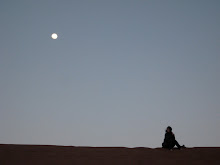TOWARD AN ETHICS IN ART WRITING moderated by Aimee Walleston
Tuesday October 4th, 2011 at 7pm
133/141 West 21 Street, Room 101C
Is it possible to define a cogent code of ethics in art writing? In this panel discussion, four young contemporary art writers–Adam Kleinman, Quinn Latimer, Patricia Milder and Matthew Schum–will investigate the problem of ethics in relation to their own work and to criticism at large.
Adam Kleinman is a writer and curator and dOCUMENTA (13) Agent for Public Programming. Kleinman is a frequent contributor to multiple exhibition catalogs and magazines including Agenda, Artforum, e-flux journal, Frieze, Mousse and Texte zur Kunst.
Quinn Latimer is an American poet and critic based in Basel, Switzerland. Her criticism appears regularly in Artforum and Frieze, and she has also written for Art in America, ArtReview, Bookforum, East of Borneo, Interview, Kaleidoscope, and Modern Painters.
Patricia Milder (MFA Art Criticism and Writing, 2010) is an art and performance writer, and independent curator based in Brooklyn. She is the Managing Art Editor of The Brooklyn Rail; she also contributes regularly to Artcritical and PAJ: A Journal of Performance and Art.
Matthew Schum studies modern and contemporary art in the Visual Arts Department at the University of California at San Diego. In 2011 he has been based between California and Italy, where he is serving as an editor for Flash Art International in Milan.
Aimee Walleston (MFA Art Criticism and Writing, 2009) is a writer based in New York City. She contributes regularly to Art in America online, Flash Art, V Magazine, The New York Times' the moment blog and The Last Magazine.
Free and Open to the Public
http://artcriticism.sva.edu/
 Friday October 28th, 2011, 6:45pm
Friday October 28th, 2011, 6:45pm